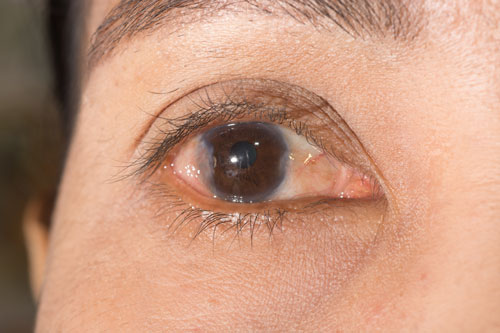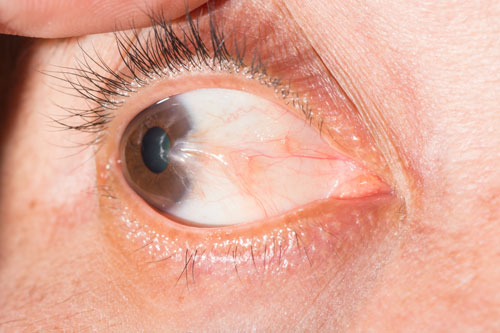Pterygium
Pterygium (from the Greek word “Pterygos” which means “little wing”) is a fibrovascular, wing-shaped, fleshy, pink growth that grows progressively over the cornea, usually forming on the side closer to the nose and growing towards the pupil area. It originates on the conjunctiva and can spread to the corneal limbus and beyond. The growth might spread slowly or even stop growing after a certain point. In extreme cases, however, it can cover the pupil and cause vision problems.
Pterygium is generally a benign or harmless growth but it may cause recurrent redness and irritation of the eye, as well as deterioration of vision due to astigmatism or progressive encroachment over the visual axis. The growth could show up in one eye or both. When it affects both eyes, it is known as a bilateral pterygium.
What causes Pterygium?
Pterygium is relatively common in countries in and around the equatorial belt, which includes Singapore. Too much exposure to ultraviolet (UV) light and rays can lead to these growths, which is the reason why this condition is also known as “Surfer’s Eye”. Anyone who spends a lot of time outdoors without the right UV protection, such as sunglasses, increases their risk of pterygium developing. UV radiation from the sun appears to be the primary cause for the development and growth of pterygia. Generally, people whose eyes are exposed to certain elements like the sun, wind, dust, smoke, sand and pollen on a regular basis have a higher risk of developing this condition.
Pterygium usually develops in people around 30 to 50 years old, and these bumps on the eyeball are rarely seen in children. People who have lighter skin and eyes may also be at an increased risk of getting pterygium.


Close up of Pterygium during an eye examination.
Treatment for Pterygium
To relieve temporary irritation, redness or discomfort caused by the pterygium, eye drops or ointment may be applied. In cases where the pterygium is cosmetically obvious or is causing symptoms such as blurring of vision, surgery is recommended to remove this fleshy growth.
Pterygium surgery aims to remove the pterygium and prevent visual deterioration from the progressive growth of the pterygium. The surgery also helps to reduce the redness and improve the cosmetic appearance of the eye.
Pterygium surgery is a procedure in which the pterygium is surgically removed and a conjunctival graft is placed over the site of excision to prevent recurrence after surgery. The conjunctival graft is harvested from the area underneath the upper lid of the eye (Bulbar Conjunctiva). It is either stitched or glued in place over the previous site of the pterygium.
A pterygium surgery is performed as a day surgery and is Medisave claimable. A pterygium removal typically takes about 30 to 45 minutes. After the procedure, the patient can return home immediately and resume work the next day. An eye patch is usually worn for protection for a day or two after surgery.



